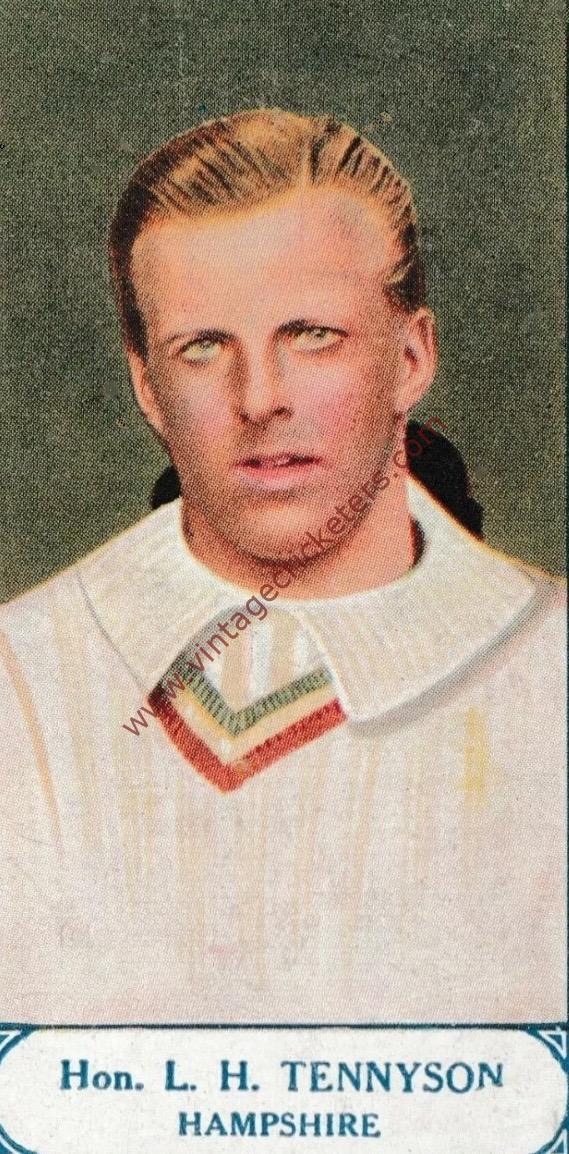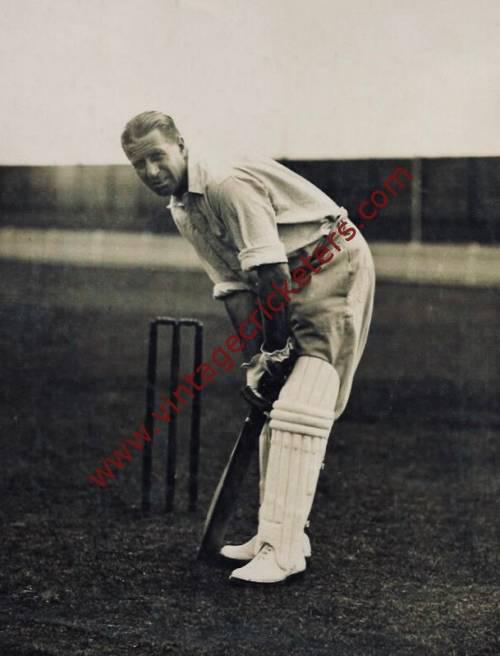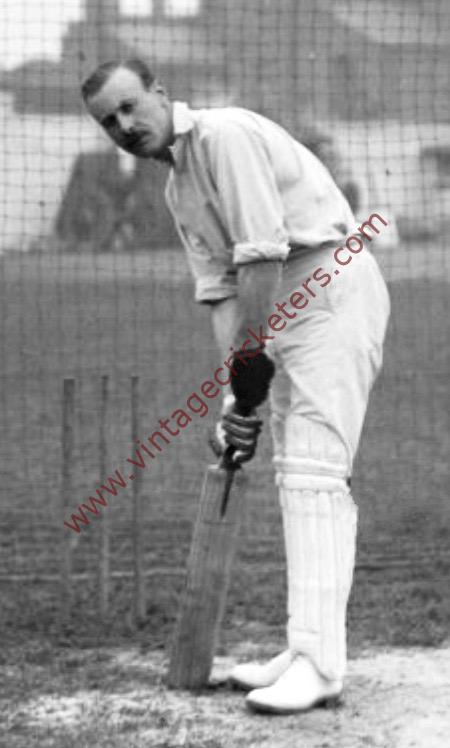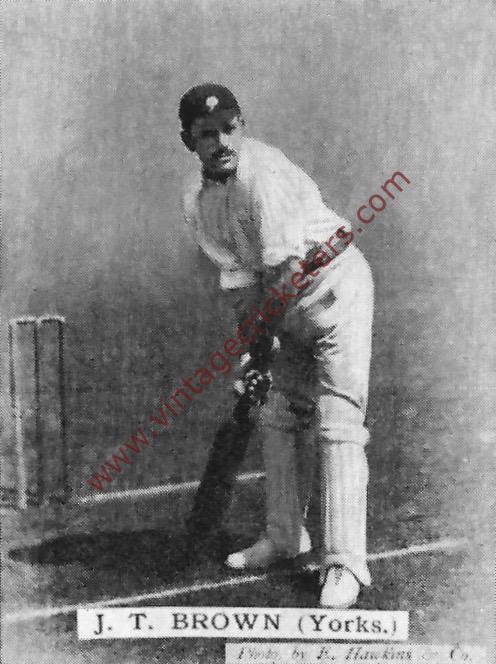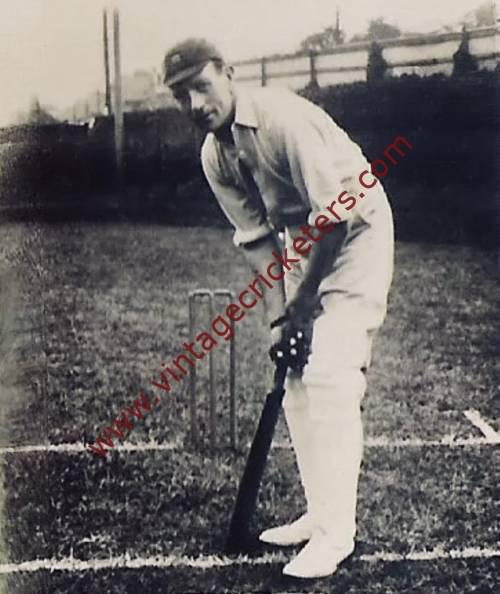Description
The grandson of the poet Alfred, Lord Tennyson, Westminster, London born The Honorable Lionel Tennyson was educated at Eton College, where he was a fast bowler and gained a place in the School XI in 1907 and 1908, but by the time he took up regular first class cricket with Hampshire in 1913, he bowled very rarely. On his first appearance in first class cricket, for M.C.C. against Oxford University at Lord’s, Tennyson scored 110 in the second innings, and he hit centuries for Hampshire against Essex at Leyton and Nottinghamshire at Trent Bridge. In the summer of 1913 he and Lieut. C. H. Abercrombie, who lost his life in the Battle of Jutland, scored so well that the achievements of the two young men went a long way to make up for the loss of the services of C.B. Fry.
Tennyson made his Test match debut for England against South Africa at Durban in December 1913 under the captaincy of J.W.H.T Douglas in the 1913-14 tour to South Africa, He was a Wisden Cricketer of the Year in 1914. During the First World War he served with The Rifle Brigade in France being wounded three times, and he was Mentioned in Despatches twice. His two younger brothers were both killed in the War.
After the War he captained the County team for fourteen years from 1919 onwards, following on from E.M. Sprot, showing inspiring leadership. He was in charge of the side in the remarkable match against Warwickshire in 1922, when Hampshire were bowled out for 15 runs in their first innings and, having been forced to follow on, then scored 521 in the second innings and won the match by 155 runs. Later in the same season, in a match against Yorkshire on a difficult pitch at Bradford, where the average score was less than nine, he went in first and hit 51 out of 64 in a fearless display which decided the issue. He could hit with great power – on one occasion at Southampton he drove a ball from Bill Fairservice of Kent over the Pavilion into an adjoining garden, a distance of almost 140 yards.
While never a really dependable batsman, he was, at his best, a splendid free hitting entertainer and represented in a striking way the spirit of adventure on the cricket field. He knew no fear, and the more desperate the position the more likely was he to accomplish something brilliant. His highest innings was 217 against The West Indies at Southampton in 1928, when, after the fall of five Hampshire wickets for 88, he and Jack Newman, with 118, shared in a partnership of 311. He gave another example of fierce hitting when, against Gloucestershire on the same ground in 1927, he scored 102 not out in fifty-five minutes.
In 1921 he scored 74 not out in the second innings of the Test match against Australia at Lord’s that year and was chosen to succeed Johnny Douglas as captain of England in the three remaining Tests in the series. At Headingley, while fielding in the first Test of this series, he damaged his hand badly enough to have justified him in forgoing his innings. That course didn’t appeal to him. Wearing a basket guard, he duly went in to bat and, though suffering great pain with every contact of bat and ball, he faced Gregory and McDonald in such plucky and resourceful fashion that he made 63 and 36. Altogether he played nine times for England, averaging 31.36 at Test level, he also took several teams to India, the West Indies and South Africa.
He played his last first class match in the winter of 1937-38, and in 477 first class matches he scored 16,828 runs at an average of 23.33, with 19 centuries and 66 half centuries, he also took 55 wickets at first class level with a best return of 3-50, and took 172 catches.
In 1933 he published his autobiography, From Verse to Worse. Returning from his second war-wound to the Western Front he records: “I have never liked travelling light and so, though the amount of kit I arrived with may, in fact have aroused a certain amount of astonishment, I was quickly forgiven by my commanding officer as well as by everyone else, when they found out that it included, among other things, a case of champagne.” He published a second volume of memoirs, Sticky Wickets, in 1950.
Vintage Cricketers was founded in July 2019. There may be more photographs of this cricketer in the Vintage Cricketers library, which are due to be loaded in due course. In the meantime, please send a message to us using the contact form at the bottom left of this page and we can arrange to prepare and publish all images of this cricketer if you have a particular interest in him.

